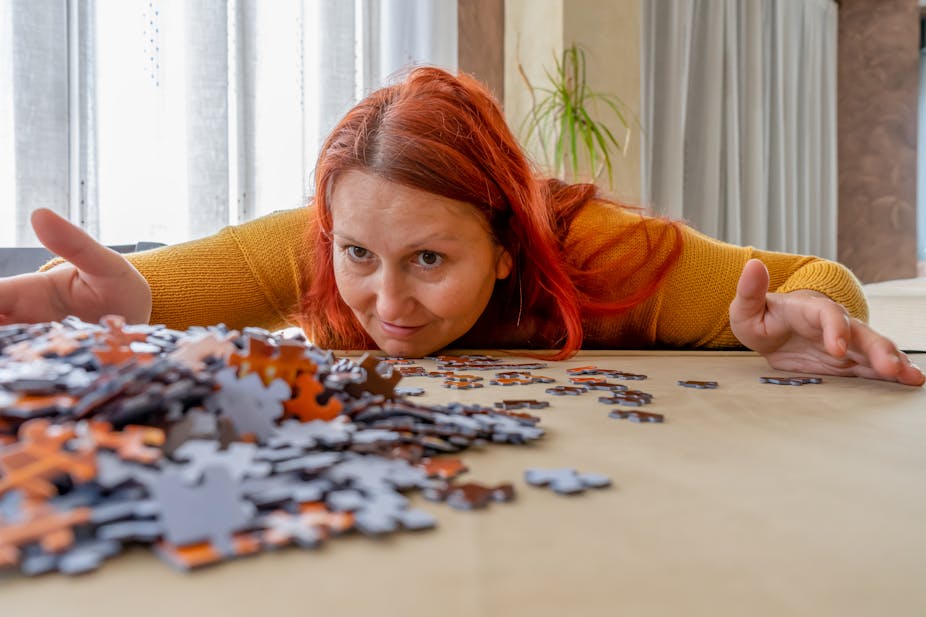Our homes are becoming smaller, darker and noisier. Access to outside space is at a premium, and housing trends are leading to lower square meterage, smaller windows and noisy open-plan home environments.
Restricted space for movement, reduced natural light, and surroundings that interfere with focused activities are detrimental enough for neurotypical people (those whose brain functions and behaviours are deemed standard). For some autistic people with significant additional needs, the potential impact can be magnified immensely.
For instance, limited natural light leads to a greater reliance on artificial light, which can be a distracting and even painful experience for those with light or sound sensitivities. For some, the flicker and hum from a fluorescent light or the intense glare of a downlighter can be magnified a thousand times.
Over the past nine years, I have been conducting research on how to help designers better understand and accommodate the needs of autistic people. I consulted with autistic people and autism-specific experts.
Autism includes an incredibly broad range of characteristics that can affect people in different ways and to different degrees. The following ideas about how existing homes could be adapted to become more inclusive are for those who require significant support from carers in their homes, whether this be in the family home, supported living or residential living. They are not meant for every autistic person, and a pick-and-mix approach is recommended in response to the highly differing needs of each individual.
The need for space
One of our lesser-known senses is called proprioception, or full-body awareness. In some people, this can be impaired, leading to feeling like parts of the body are floating.
The consequences of this might include the inability to sit still, uncoordinated movement – such as struggling to walk straight or to avoid obstructions – and extreme sensitivity concerning personal space, especially if it is encroached upon by others.
Where movement is limited by reduced space, such as in our increasingly smaller homes, the effect and associated anxieties intensify. So for those with impaired proprioception, simply having enough space in the home can be vital for comfort.
My hope is that greater use of a design approach that takes into account the experiences of autistic people with significant additional needs could help improve their self-esteem and physical health and reduce the likelihood of developing mental health problems. In some people, it might even help develop skills and independence which could lead to employment opportunities.
Here are four more ways existing homes could be adapted to become more inclusive.
1. Choice
Creating a choice between two spaces for activities in the home can help reduce potential sensory triggers. For example, as an alternative to a traditional kitchen environment, setting up a worktop to prepare snacks in the corner of a quieter dining room can enable them to do so away from the hum of electrical appliances.
Some will also find open-plan living is best avoided. Separated rooms have better acoustics, less transfer of smells and a clearer focus on the purpose of the space.

2. Somewhere to create
Some may spend a large amount of their time at home. So it can be important that their accommodation has the right spaces for them to carry out different activities that they might not otherwise have a chance to. For example, adding space-saving fold down tables or converting an existing alcove offer opportunities to create activity zones where people could pursue hobbies or crafts.
Being able to pursue meaningful activity at home because you have the designated space, can help people to make the most of their potential. It could lead to a growth in confidence, give people a chance to become part of a community who share their interests, and even lead to better job prospects.

3. Space to pace
Some find it difficult to be near others or have poor body awareness in space. They may find it beneficial to move furniture to the edges of important rooms or keeping circulation spaces clear to allow for plenty of personal space. Some will find it useful to have room to pace, a self-stimulatory behaviour or “stimming” that helps some autistic people self-regulate and release their emotions.
Having a zone for movement can help prevent sensory overload. Likened to listening to a loud out-of-tune radio, this is where someone receives too much sensory information, such as noise or light. Some could also benefit from specific movements, like pushing against a soft wall panel that provides sensory resistance for muscles and joints, again helping them filter sensory stimulation.

4. Mini-gyms
Another idea that might work for some people is to create a miniature home gym. It might consist of ramps, steps and rockers that vary in size and quantity, depending on available space, that could help those who want to improve abilities such as balance and coordination. Others may find lifting heavy objects can help balance their senses between being too calm (hypo) and too excited (hyper).
There is no one-size-fits-all approach when designing for autistic people, especially those with significant additional needs. But creating a home environment that truly suits someone’s personal characteristics and needs can help them reduce frustration and anxiety, achieve goals (no matter how big or small) and generally improve their quality of life, health and wellbeing.

